Ten life-changing lessons about brie
There's a lot you might not know about this popular cheese
Earlier this week, I put up a post on our social media about the difference between Brie de Meaux and basic brie. It went viral, somehow garnering more than 2 million views on Facebook in a matter of days. This little cheese post has been shared thousands of times and has landed us a fair number of new readers. Welcome to you all!
I had planned today to publish an article about solo dining in Paris, but decided instead to give the people what they clearly want: more words about brie. There are currently more than 2,400 comments on that Facebook post (and they are hilarious). Some are accusing me of being an elitist snob by contrasting Brie de Meaux with basic brie. But most are simply surprised to learn that there’s such a difference between what you can taste in France vs. what is widely accessible in foreign (American) supermarkets. For them, and for our existing subscribers, I want to explain more about why that’s the case, and to focus a little more on this very special cheese.
Brie de Meaux has been produced in France since at least the 8th century. The chronicler of Charlemagne reported that the emperor tasted it in the year 774. In 1815, the Congress of Vienna took a break from redrawing the boundaries of European nations (post-Waterloo) to taste this fromage and to declare it “the king of cheeses.”
It’s a very good cheese. Here are ten things you’ll be happy to know about Brie de Meaux, about brie in general, and about what you’re able to enjoy (or not) outside of France.
#1 - Brie de Meaux is from one place
Brie is a style of cheese named after the region (Brie) near Paris where it has been made for at least a millennium. The most iconic one is called Brie de Meaux, named after the village (Meaux) where it’s made. If you were to ride your bike along the Canal Saint-Martin as it exits the northeast side of Paris, you would reach the village of Meaux in about two hours.
#2 - Brie de Meaux is one of many different bries
Brie de Meaux is the most iconic brie, and the example after which many others are modeled, but it’s only one of a dozen bries produced in this region. The second most sought-after one is Brie de Melun, which is smaller, darker and saltier than Brie de Meaux.
Brie de Nangis is the most widely available in the USA, for reasons we’ll get into later. If you’re in France, you might also spy Brie de Provins, Brie de Montereau, and the long-aged, slightly terrifying brie noir (black brie). Coulommiers doesn’t contain the word in its name, but it’s also in this family and considered to be the “mother brie” that originated this style.
#3 - Bries are one type of bloomy rind cheese
Brie de Meaux and other bries fall within the category of cheeses known as bloomy rinds, so-called because their rinds “bloom” a lovely garden of Penicillium mold. Camembert de Normandie is another famous bloomy rind, and made in a similar fashion, but it is not a brie.
#4 - Brie de Meaux is not a double cream cheese
The bloomy rind category includes a wonderful double cream cheese called Chaource, and a triple cream cheese called Brillat-Savarin. Double and triple cream cheeses are made by adding higher butterfat cream to the milky curds during production. They have a wonderful richness (and obviously creaminess) that comes from that extra butterfat. In the United States, many brie style cheeses (the tastiest ones) are produced in this way - they are double cream or triple cream bries. I have never seen extra fat added to a brie style cheese in France, and you will never see a double cream Brie de Meaux.
#5 - Brie de Meaux is always made from raw milk
I can say that for sure because I know the AOP regulations for the production of Brie de Meaux. AOP stands for appellation d'origine protégée. Appellation means name, origin means place, and protégée, as you can probably guess, means protected. If you want to use the “real” name Brie de Meaux, it has to be from the right place, and it has to be produced according to certain rules. One of those rules is “thou shalt not add extra fat to make it double cream.” Another rule says the milk cannot be pasteurized. AOP Brie de Meaux is a raw milk cheese. If you want to make a brie with pasteurized milk, you must drop the protected place name (Meaux) and call it simply brie.
#6 - Age matters with Brie de Meaux
There’s also a rule about when Brie de Meaux can be sold, and guidelines about when it should be enjoyed. This cheese develops its flavor during a fermentation process (powered by “good bacteria” in the raw milk curds + transformative mold on the rind) that takes about six weeks. If you taste a Brie de Meaux before it has properly aged, it will not yet have developed its characteristic notes of mushroom, sous-bois (forest), cauliflower and/or oyster. It will taste milky, but not complex.
In order to protect this very desirable flavor profile, the AOP rules for Brie de Meaux state that it cannot be sold before the age of 28 days (4 weeks). Good fromageries will carefully age it a little longer - a process called affinage - and sell it only when the cheese is à point or perfectly done (a term that’s also used when ordering steak).
There are no rules governing the end-date for when Brie de Meaux can be sold, other than good taste. If you let the fermentation process continue and sell it after seven weeks, it starts to smell and taste of ammonia. The delicate sous-bois aroma becomes profoundly funky - it’s the difference between strolling through the autumn forest (at 6 weeks) and rolling around in a pile of rotting leaves (at 8 weeks).
#7 - Brie de Meaux is rarely exported to the United States
Many countries have rules about raw milk that are more strict than those found in France. The United States, for example, only permits the sale of raw milk cheeses that have been aged for 60 days (whether imported or domestic). Brie de Meaux can only be made with raw milk, and so it can only be sold in the US after aging for 60 days. But Brie de Meaux at 60 days/8 weeks of age is funky and ammoniated.
Brie de Nangis, on the other hand, is not protected by an AOP designation (Brie de Meaux and Brie de Melun are the only AOP protected bries) and can be made with pasteurized milk. The Brie de Nangis won’t be as complex as a Brie de Meaux (many people are more than fine with that), but it will be creamy with a satisfying texture. I’d rather eat a pasteurized Brie de Nangis than a rotting raw milk Brie de Meaux.
#8 - Protections are not elitist
The AOP rules that protect Brie de Meaux may sometimes be hilarious (there is a “brie decree” and even rules for cutting the cheese) but they are not elitist. Some people are suspicious of “gate keeping” and equate such rules with snobbery. My take on this is different.
When you make a cheese following these rules - using certain breeds of cows (milk composition varies from breed to breed) that are grazing in a specified area (flora and microflora vary from place to place), using certain production methods and aging the cheese to a certain standard of ripeness - you are ensuring typicity - in this case, a Brie de Meaux that is typical and tastes like other Brie de Meaux.
You are not ensuring quality - that’s an entirely different matter. From experience, I know that a Brie de Meaux produced by the Dongé family and aged to perfection by Laurent Dubois (what we taste on most of our food tours) will usually be a little better than other Brie de Meaux. But it will still taste like Brie de Meaux (and nothing like an industrially produced brie made from pasteurized milk). These AOP rules ensure consistency and enable me to select a Brie de Meaux from any cheese shop in France and know it will always taste “correct".
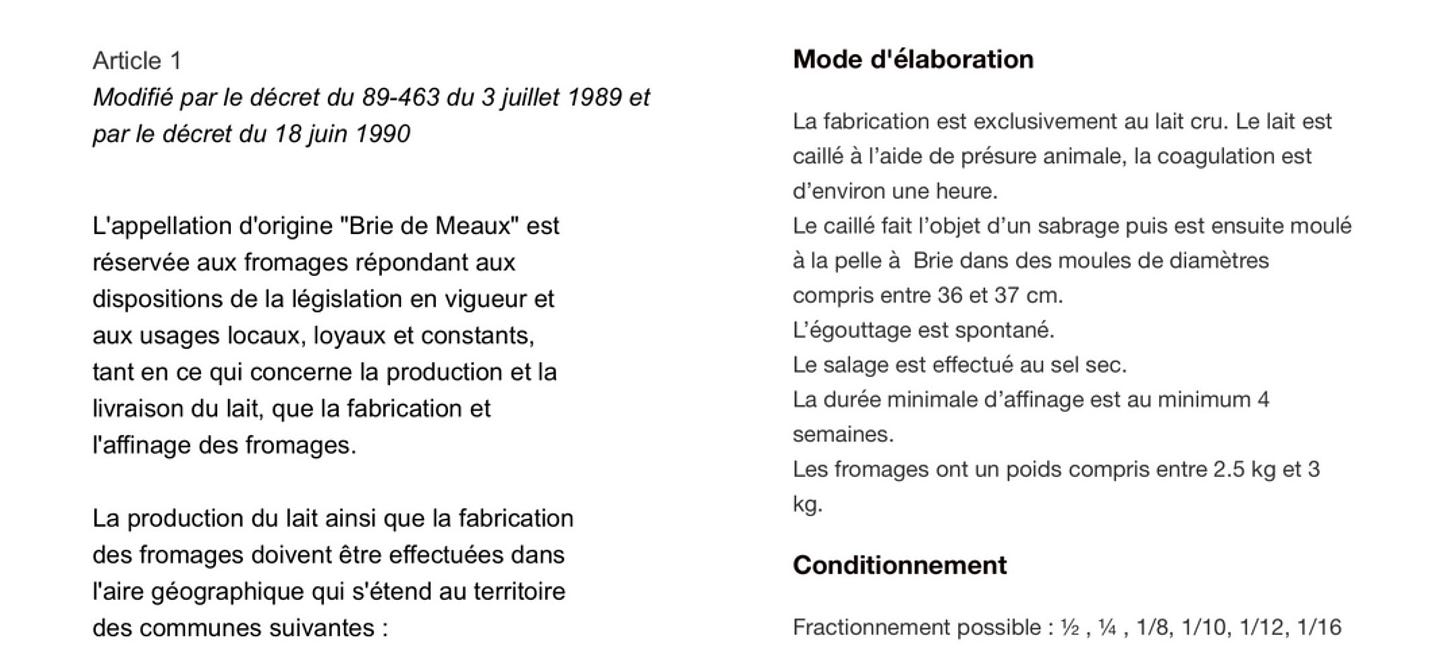
#9 - Brie de Meaux is a brie, but brie is not Brie de Meaux
The “brie” that is sold in French supermarkets and exported around the world is not Brie de Meaux. Those cheeses are generally pasteurized, with some additives to improve shelf-stability. They are not following the AOP rules for Brie de Meaux and therefore cannot use the name. The word Brie (without a place name) can be anything, produced anywhere, from any animal. It can have extra fat, be made from goat’s milk, be flavored with garlic & herb - whatever.
Within that “whatever” category, there are both good and less-tasty cheeses. There are non-Meaux bries produced by artisans (in many countries) that taste creamy and delicious. There are bries produced by factories (in many countries) that taste like plastic. Without the AOP rules, it’s an open field that includes both good and bad.
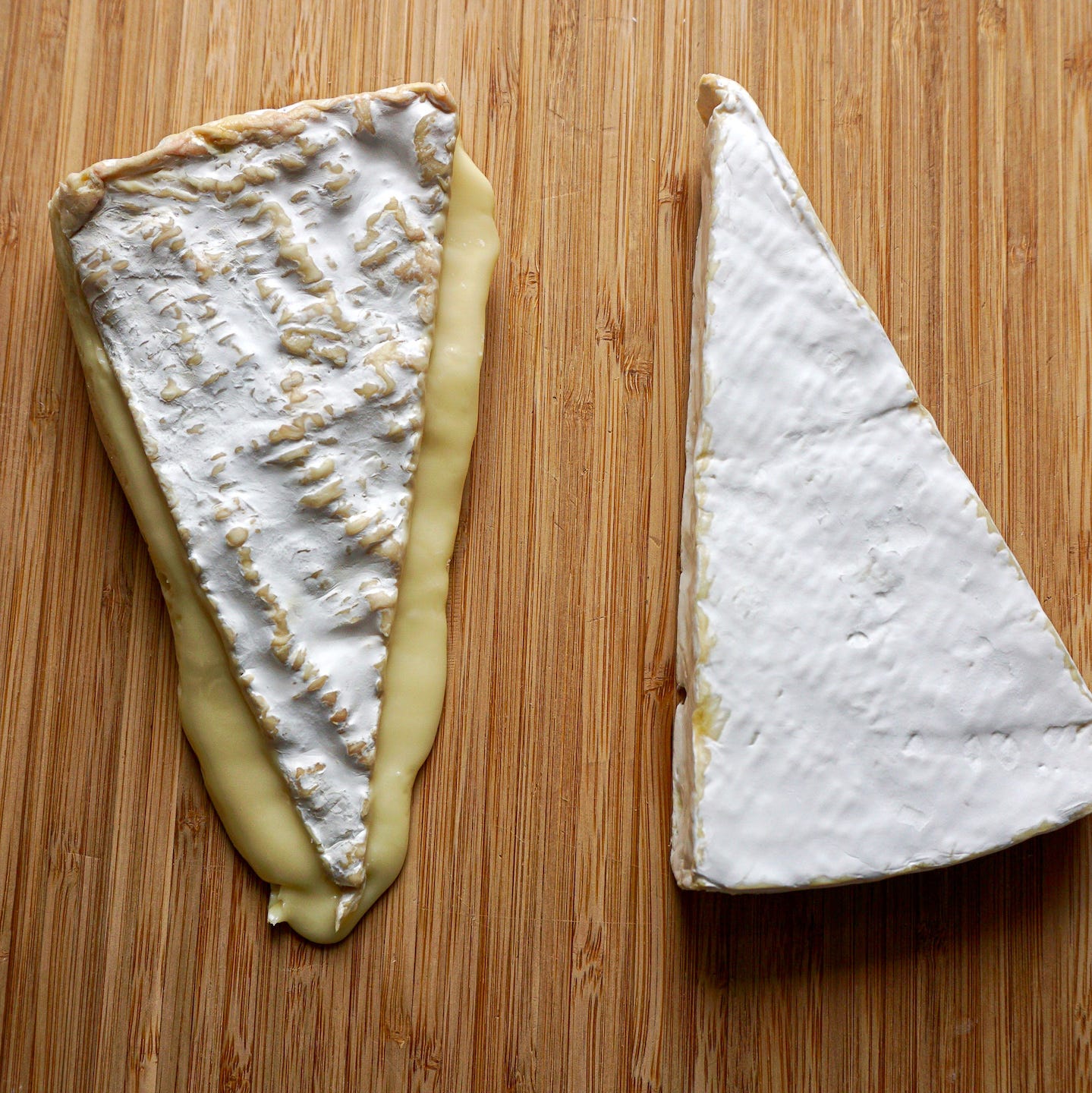
When you see Brie de Meaux, you know what you’re getting. If you see the word brie by itself or with some other words, it’s more of an open question.
The goal is to avoid the rubbery industrial version that you see above on the right. You’ll find these in big-surface supermarkets with names like “fromage de brie” or “brie de france". Président is a widely available brand of industrial brie.
There are also many good brie-style cheeses that don’t have the word “brie” in their name at all. In the US, I recommend St-Stephen from Four Fat Fowl, Mt-Tam (triple cream) from Cowgirl Creamery, Moses Sleeper and Little Hosmer from Jasper Hill.
You can also go for brie-style cheeses that have added fat. Saint-André is a widely available triple-cream cheese that will always taste creamy and delicious, even if it’s not complex like Brie de Meaux.
#10 - Brie de Meaux doesn’t need to be baked
Growing up in Kansas, I didn’t encounter a lot of brie. When I did, it was usually baked and gooey, or stuffed with something sweet. There was sometimes a pastry crust involved, and there was always a cluster of grapes. I thought it was heaven.
When I moved to France in 2004, I was honestly startled by the taste of Brie de Meaux. The brie I knew was simple and milky. Brie de Meaux tasted like a whole meal in every bite - mushroomy and vegetal but also eggy, woodsy, meaty, funky, briny… I wasn’t used to complex flavors like that and didn’t initially love it. I had to warm up to Brie de Meaux.
But I never did warm it (in the oven). Simple pasteurized brie takes well to some doctoring and the addition of sweet things. Brie de Meaux is a complex beast that doesn’t need or want any additional frills.
Baguette is always welcome, and sliced apple or pear can be nice. Red wine is best, and Cabernet franc from the Loire valley (Chinon, Bourgeuil, Saumur) is my favorite wine pairing for Brie de Meaux. Mineral white wines make its bloomy rind taste metallic.
If you enjoyed reading this, we hope you’ll subscribe to our newsletter for more cheese tidbits and our recommendations for enjoying Paris.
If you’re planning to visit, consider joining one of our Paris food tours, or signing up for all-fromage French Cheese Explosion. We hope to see you again!





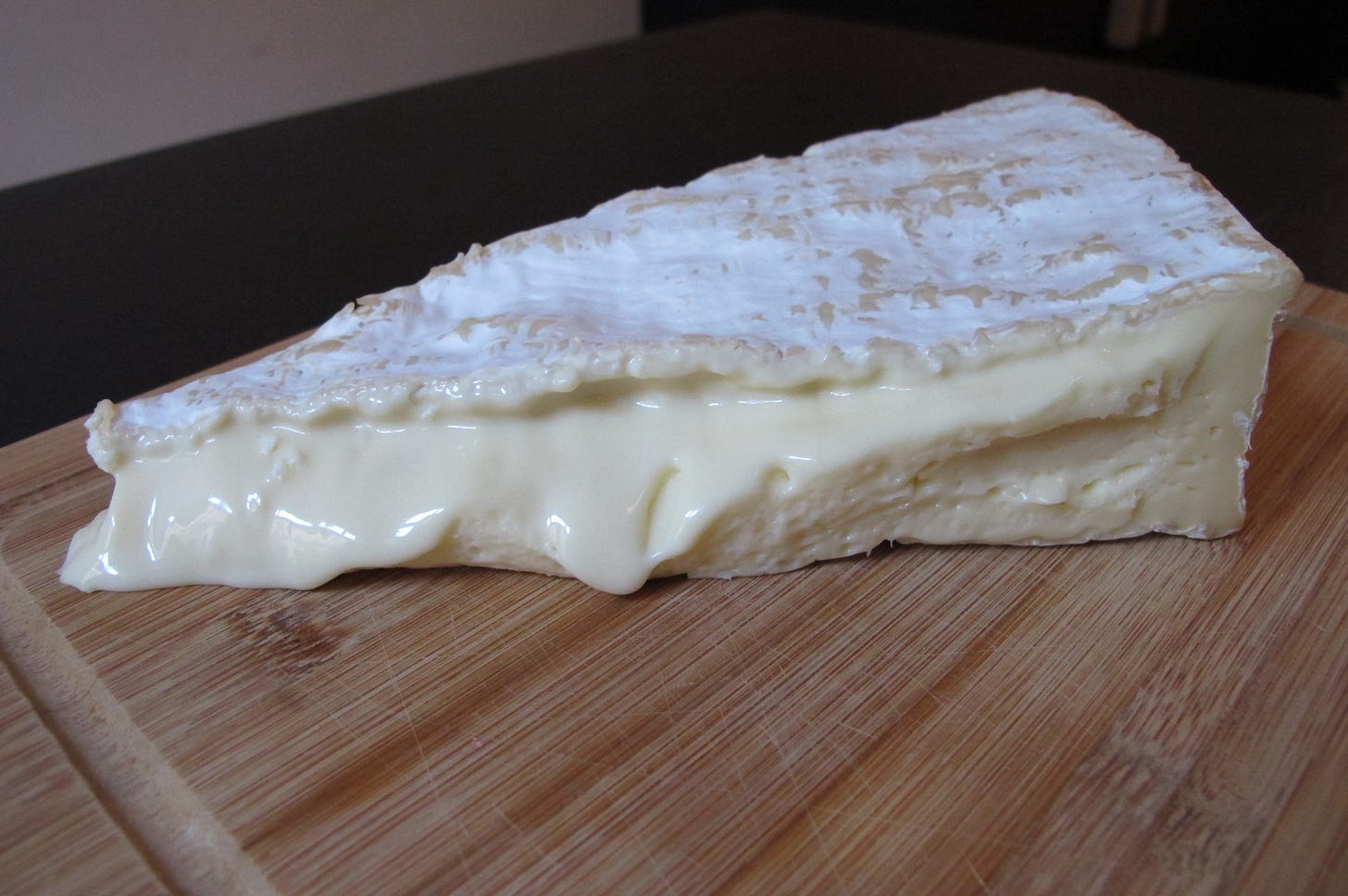
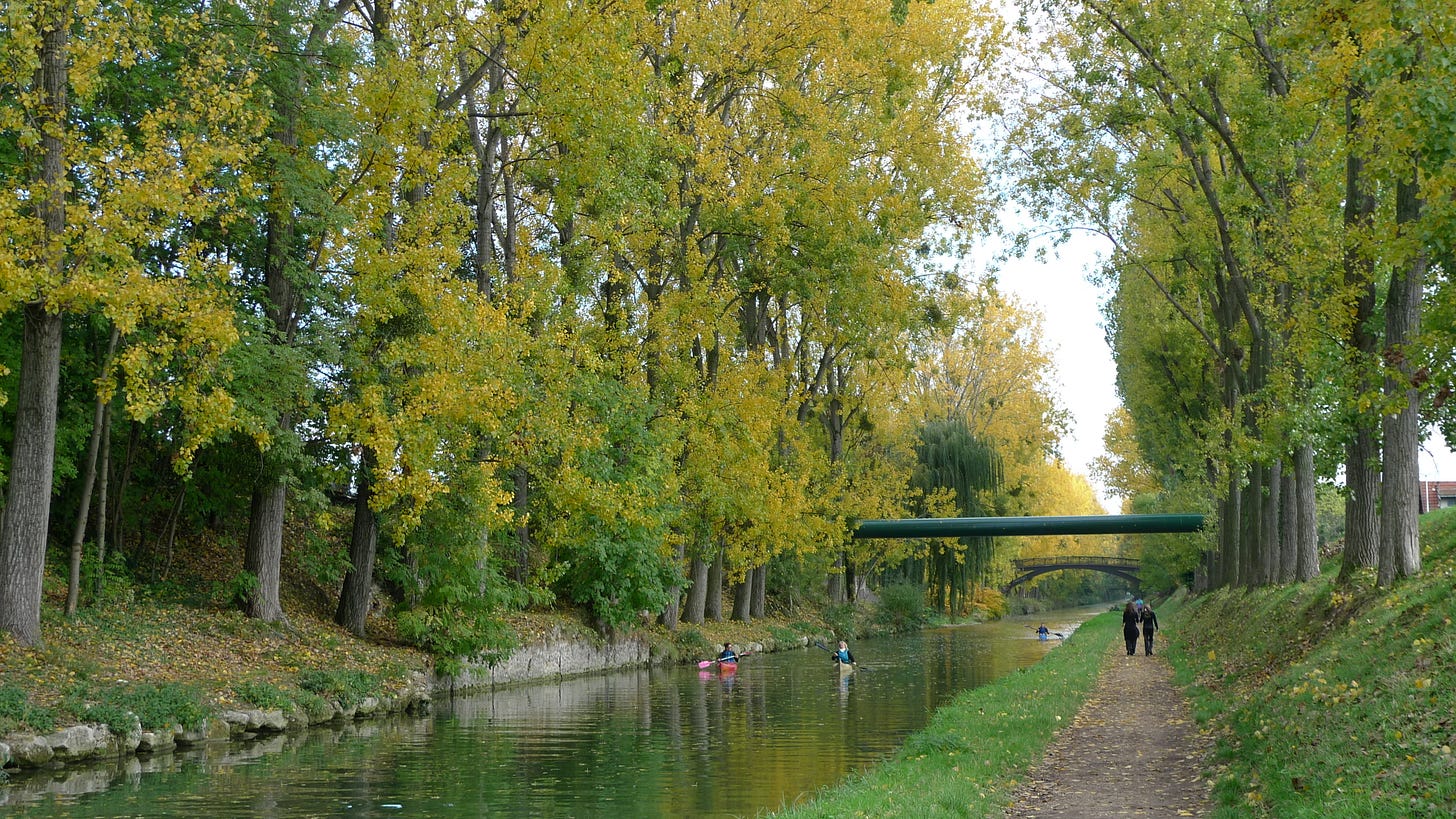

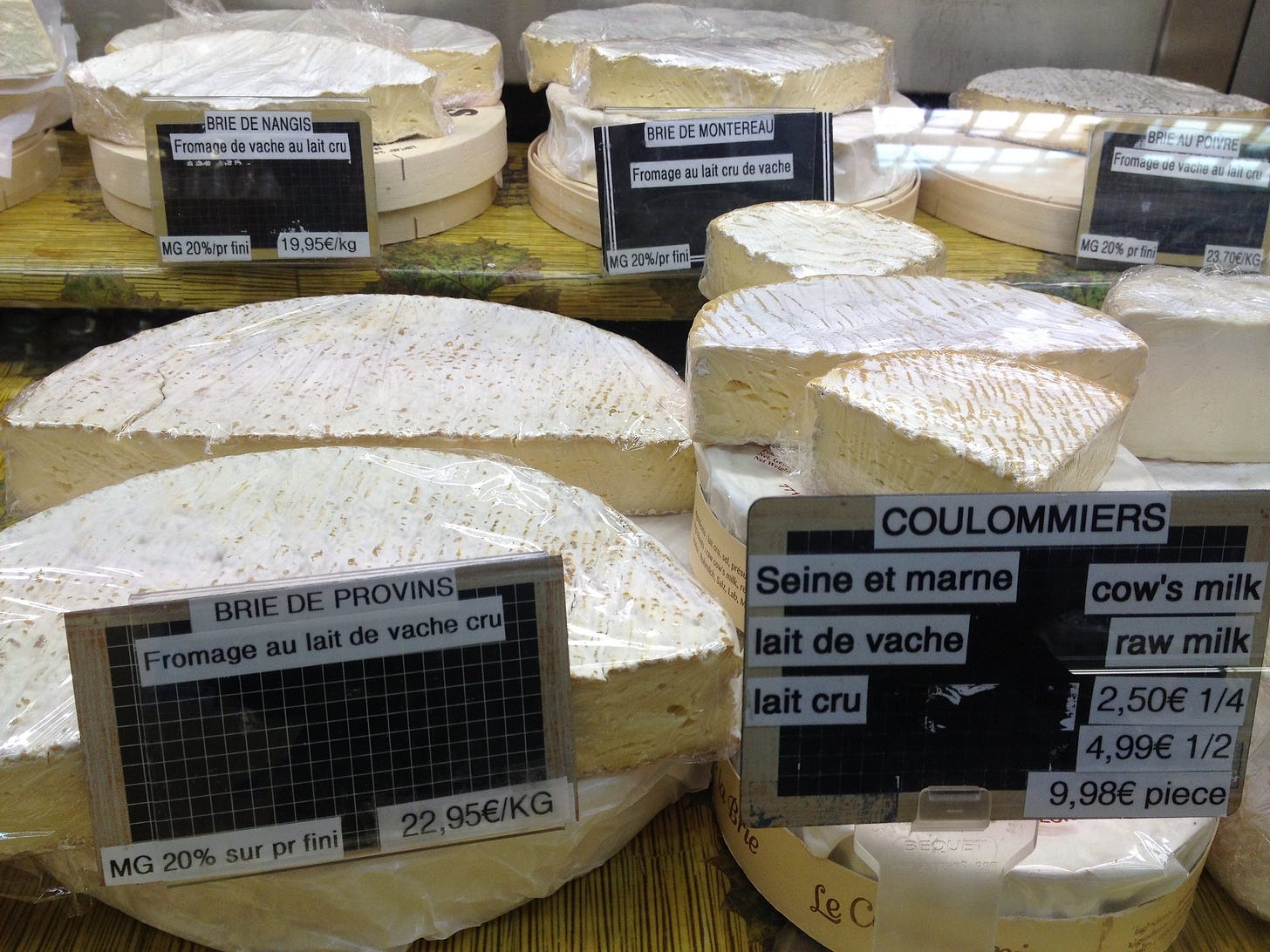
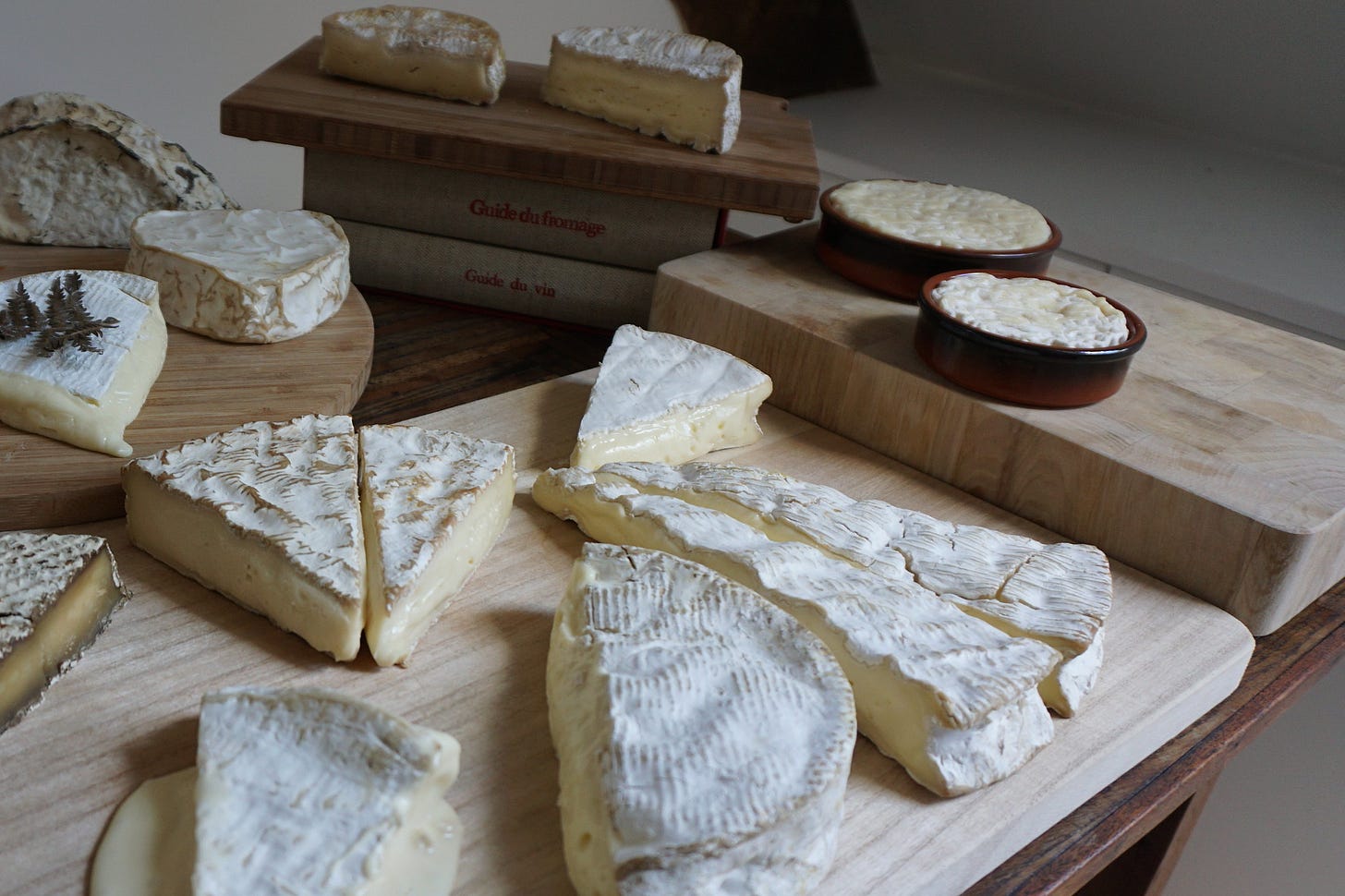
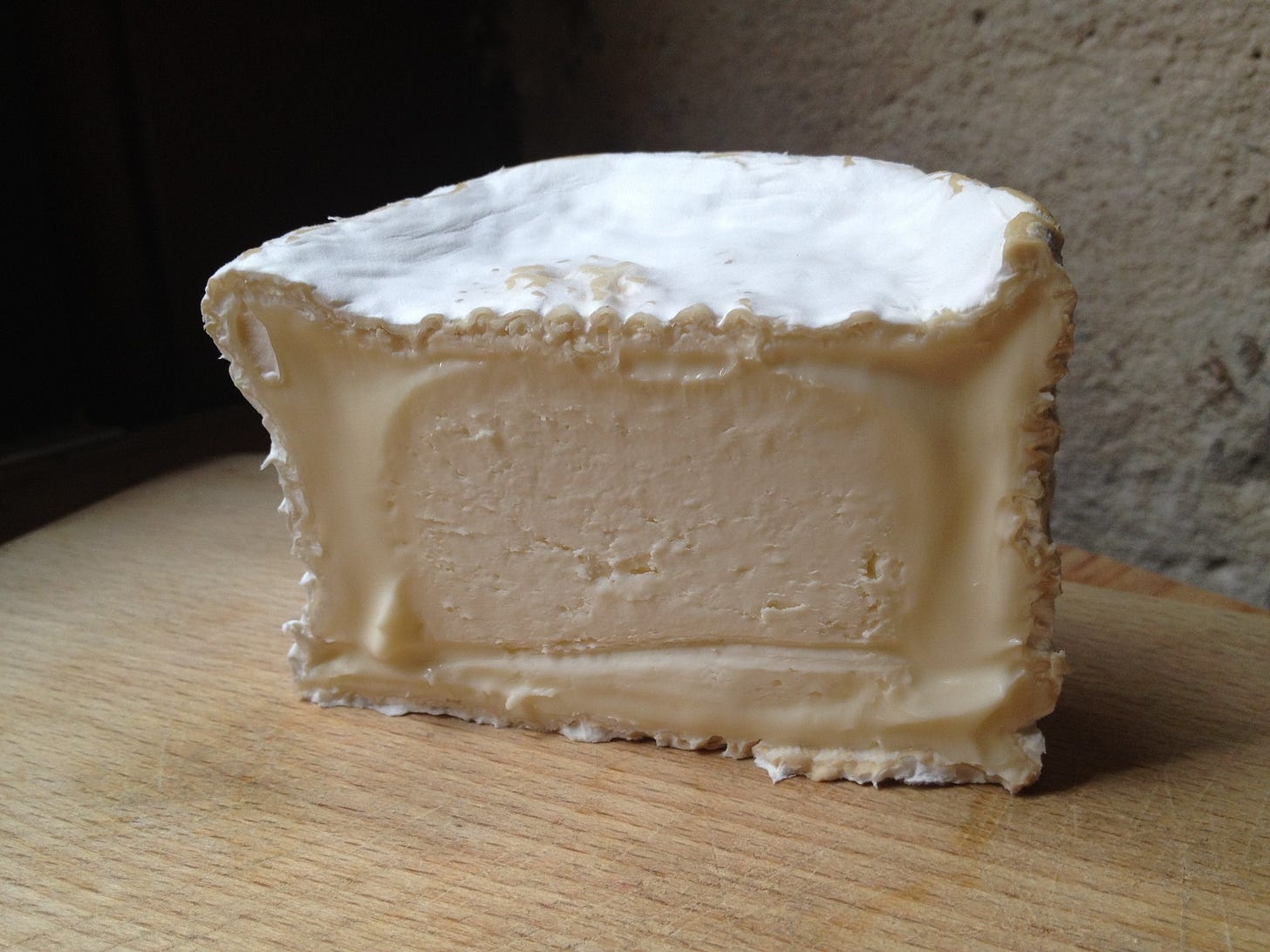
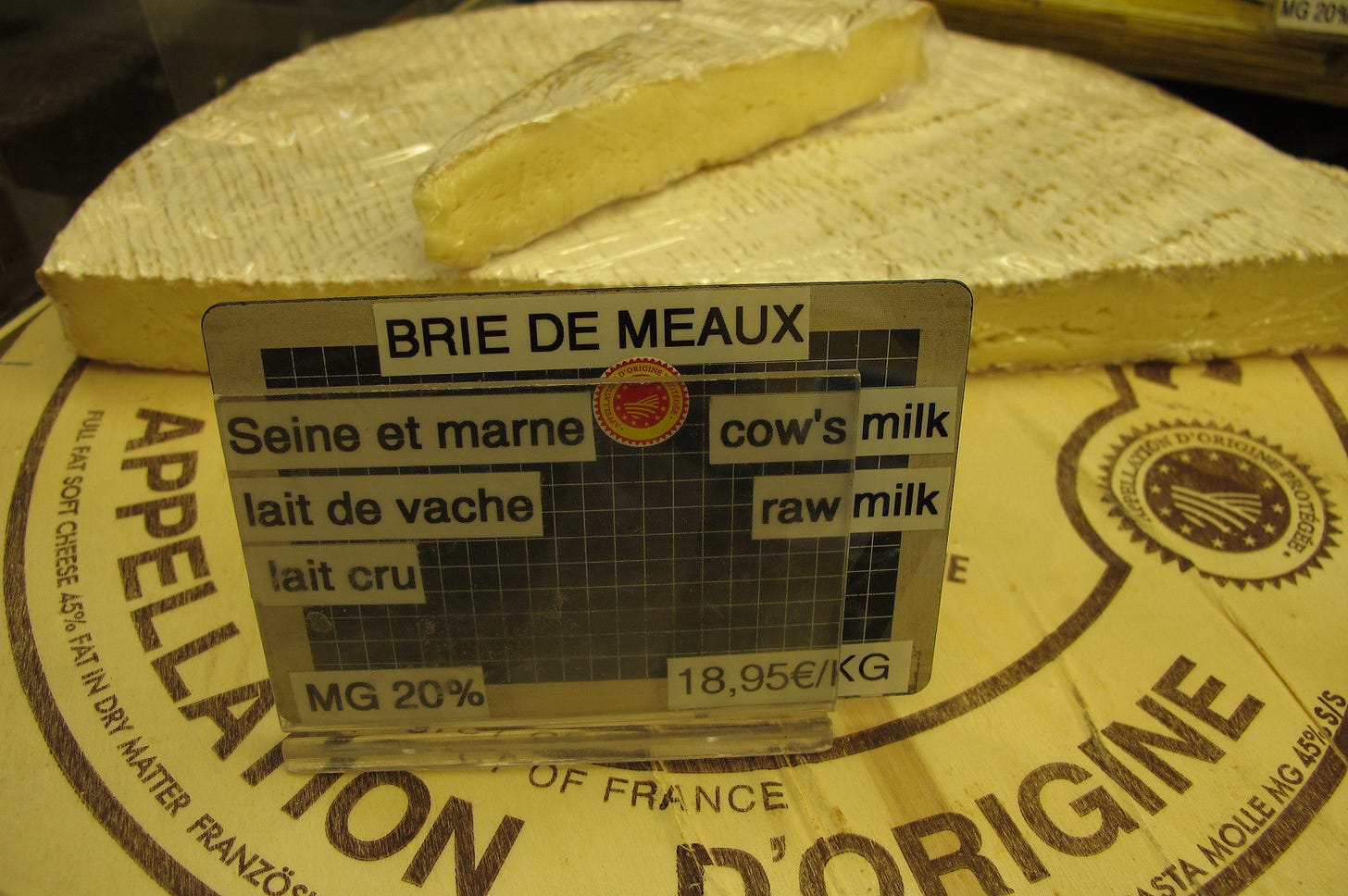
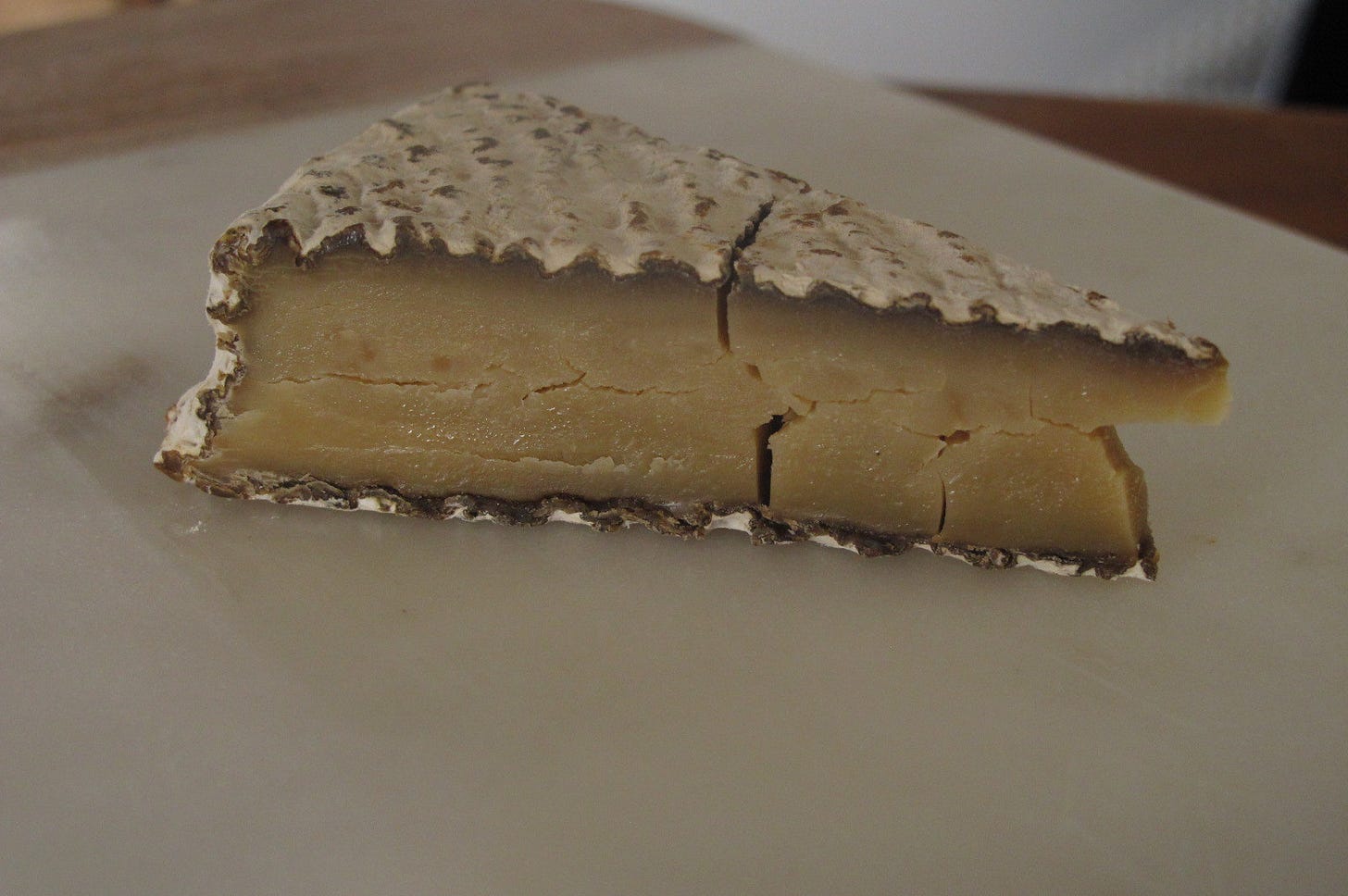
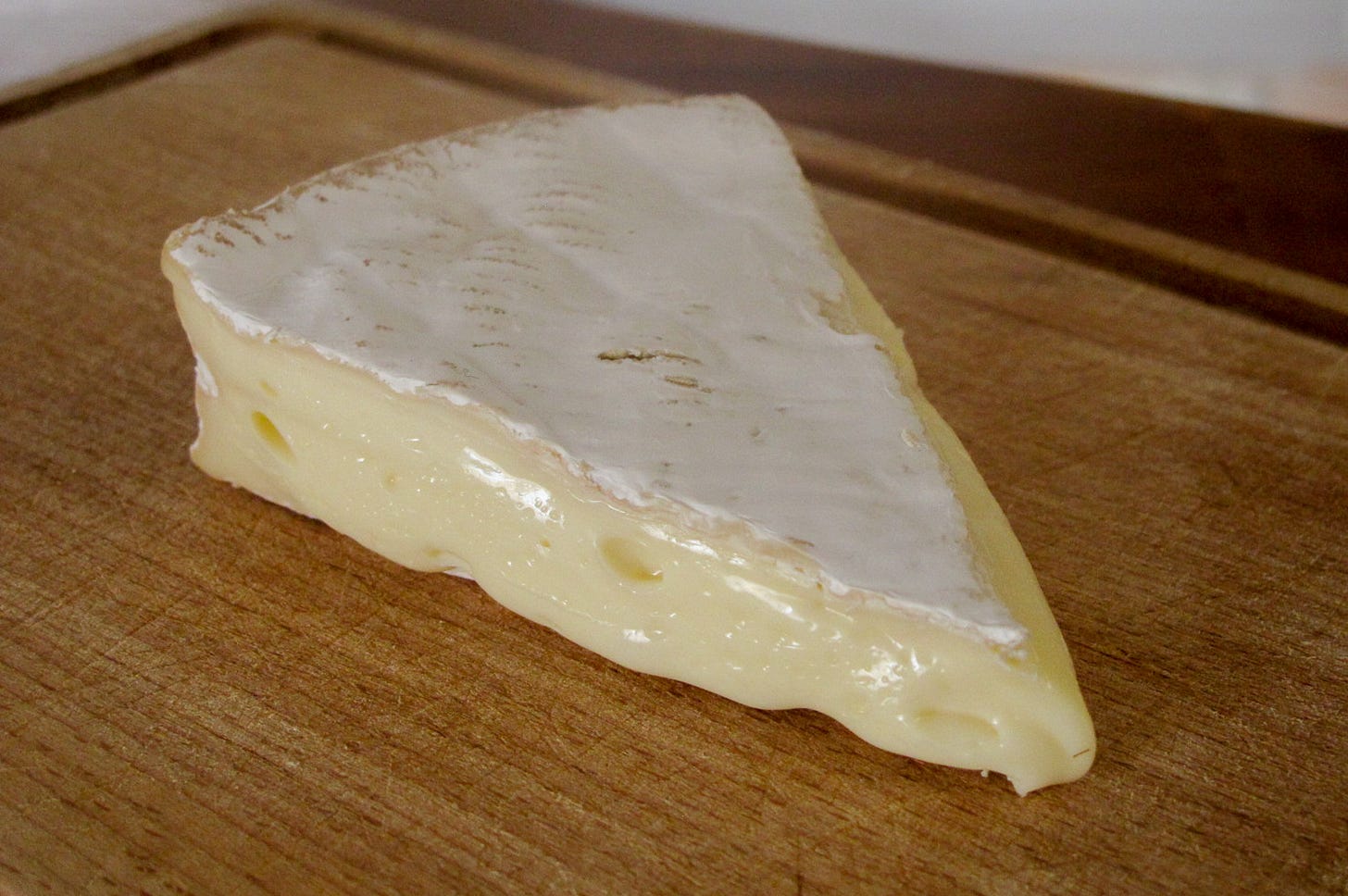
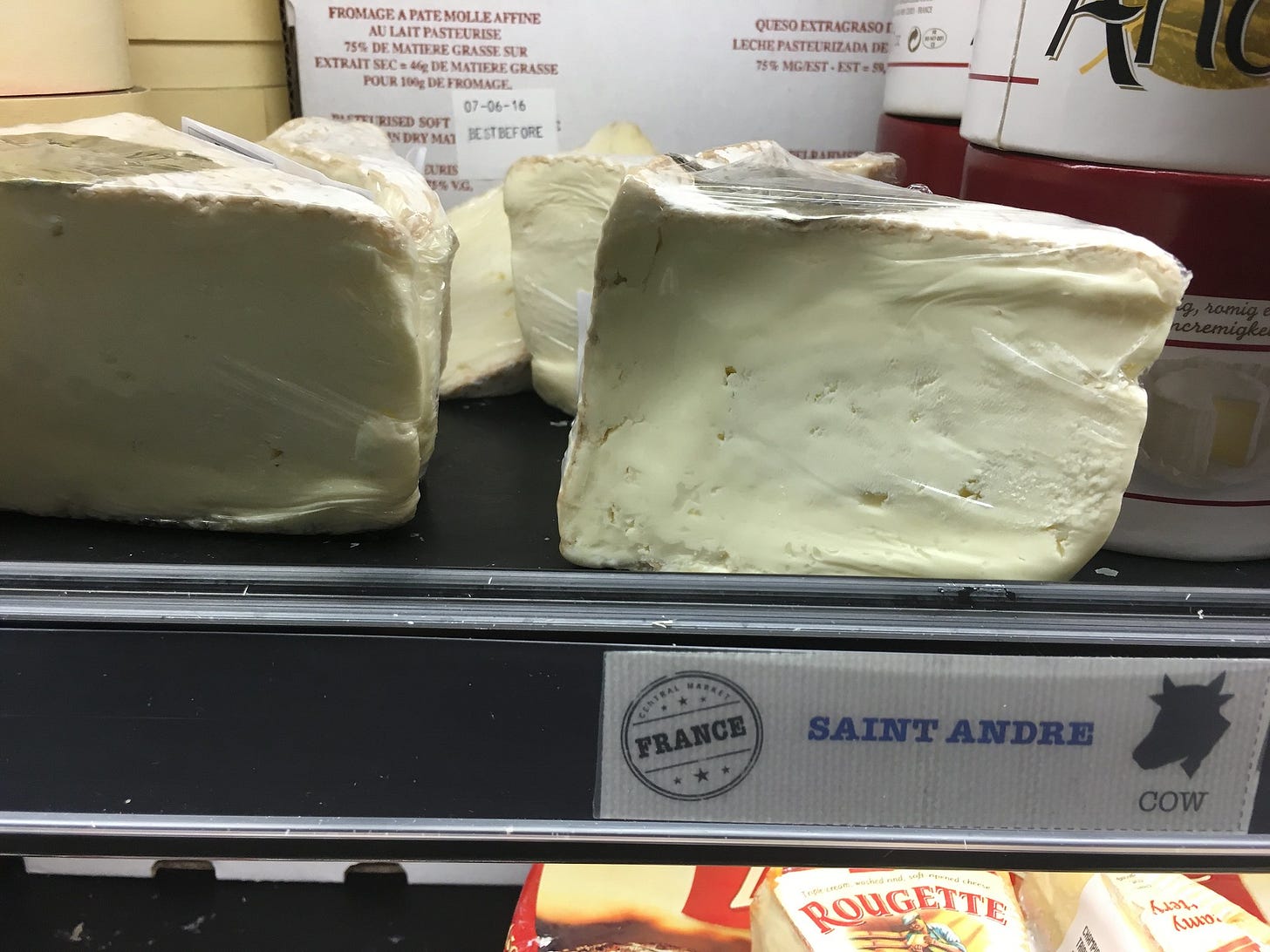
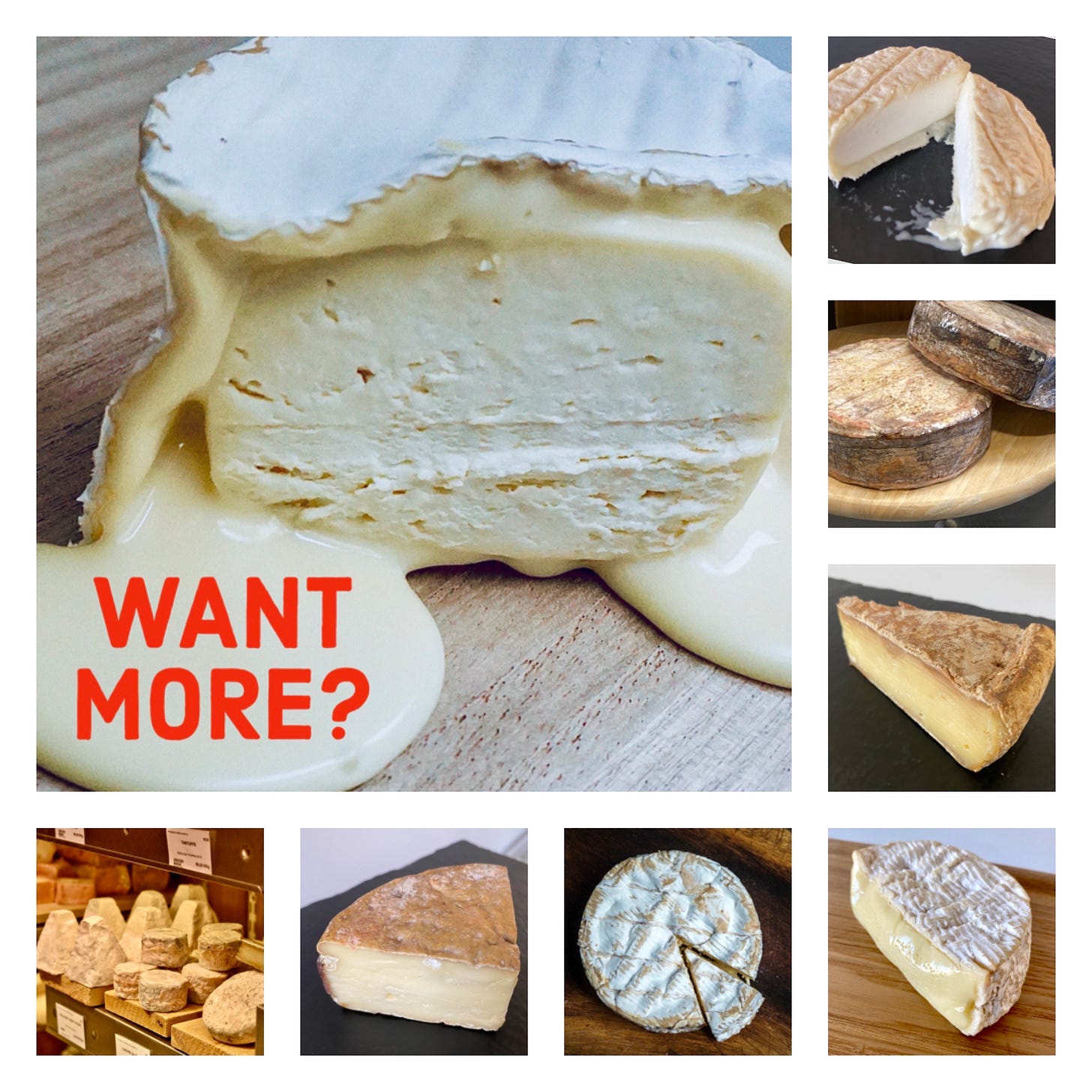
Great article! I went back through my pictures from our walking tour of the Latin Quarter and the Androuet cheese shop and have pictures of the Brie de Meaux, Brie de Melun and Brie de Nangis. I know we tasted at least one and it was likely the Meaux. I loved them all but was probably the only one in the group that did. In the States, my favorite is the Mt Tam but it’s limited where it can be purchased though you can get it online direct from Cowgirl. I love learning the details of great foods like this. I can’t recommend Paris by Mouth food tours enough, they are fantastic. Merci!
Fabulous article! The last brie I had was from the Marché Maubert. Emily Monaco introduced me to a fromager at the market who showed us pictures of his cows and then the brie that was made from their milk. Of course I had to buy some and it was delicious. You can't not buy some cheese after meeting the cows.